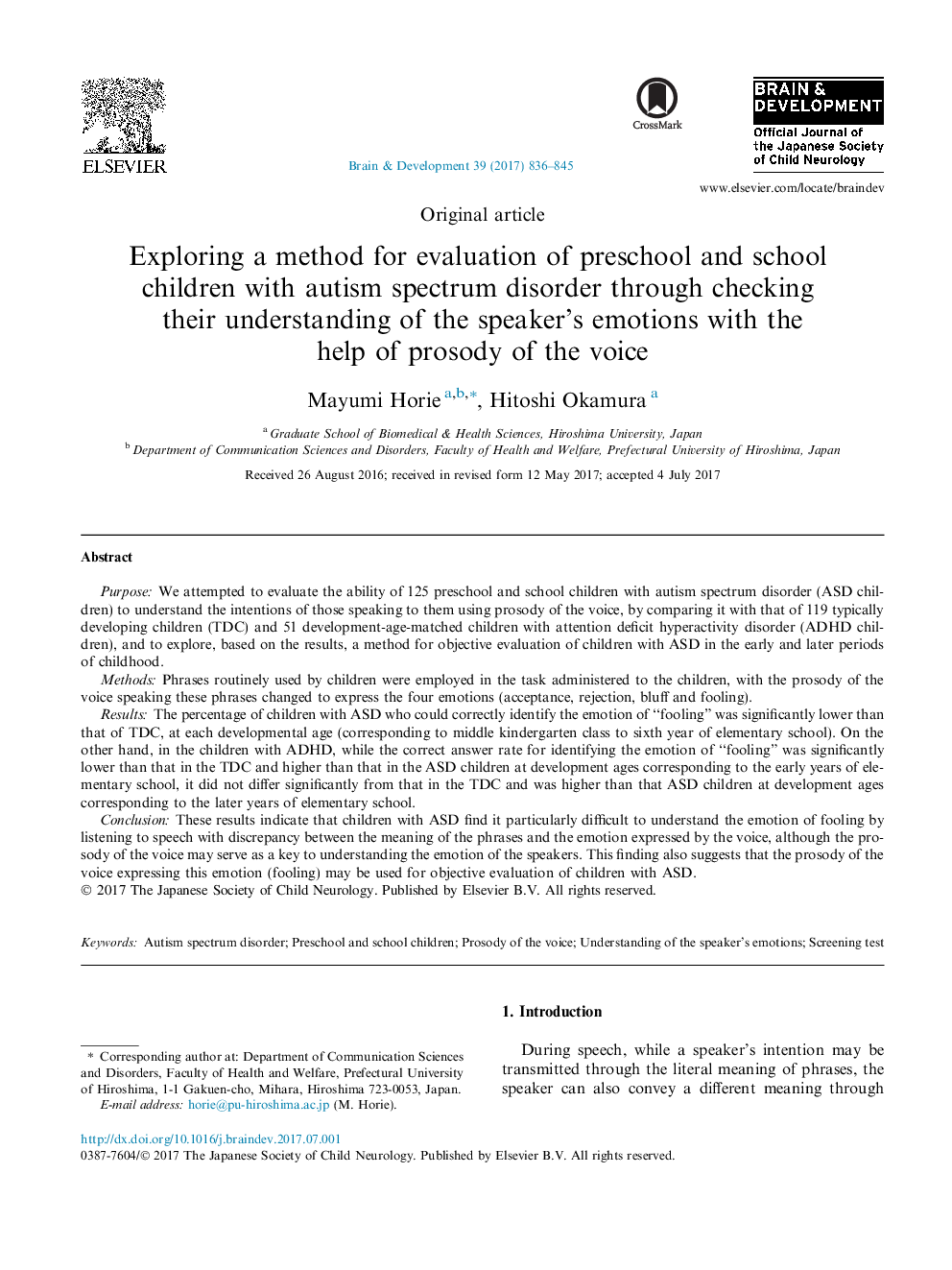| کد مقاله | کد نشریه | سال انتشار | مقاله انگلیسی | نسخه تمام متن |
|---|---|---|---|---|
| 5626357 | 1579639 | 2017 | 10 صفحه PDF | دانلود رایگان |

PurposeWe attempted to evaluate the ability of 125 preschool and school children with autism spectrum disorder (ASD children) to understand the intentions of those speaking to them using prosody of the voice, by comparing it with that of 119 typically developing children (TDC) and 51 development-age-matched children with attention deficit hyperactivity disorder (ADHD children), and to explore, based on the results, a method for objective evaluation of children with ASD in the early and later periods of childhood.MethodsPhrases routinely used by children were employed in the task administered to the children, with the prosody of the voice speaking these phrases changed to express the four emotions (acceptance, rejection, bluff and fooling).ResultsThe percentage of children with ASD who could correctly identify the emotion of “fooling” was significantly lower than that of TDC, at each developmental age (corresponding to middle kindergarten class to sixth year of elementary school). On the other hand, in the children with ADHD, while the correct answer rate for identifying the emotion of “fooling” was significantly lower than that in the TDC and higher than that in the ASD children at development ages corresponding to the early years of elementary school, it did not differ significantly from that in the TDC and was higher than that ASD children at development ages corresponding to the later years of elementary school.ConclusionThese results indicate that children with ASD find it particularly difficult to understand the emotion of fooling by listening to speech with discrepancy between the meaning of the phrases and the emotion expressed by the voice, although the prosody of the voice may serve as a key to understanding the emotion of the speakers. This finding also suggests that the prosody of the voice expressing this emotion (fooling) may be used for objective evaluation of children with ASD.
Journal: Brain and Development - Volume 39, Issue 10, November 2017, Pages 836-845